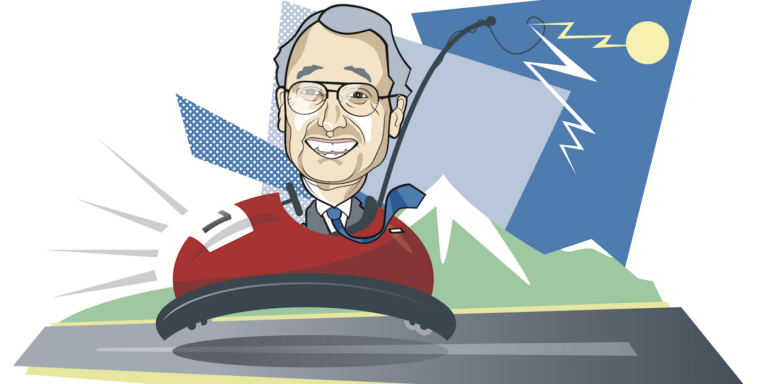I was a beginner in Roger Becker’s chassis development department at Lotus working on a GM Cavalier. Surely all that bump travel toe-out steer on the front axle couldn’t be right? I spent hours ‘correcting’ it, but then found the car became somewhat nervous at the helm. It yawed too much in transients and wouldn’t run straight at all on bumpy roads. Replacing the bump steer, it became super stable again, but not responsive.
I was nonplussed. It took time for me to realize that the tire doesn’t know what it is attached to the car by. It knows vertical load, slip angle and camber. If the wheels camber due to suspension movement, the tire will create cornering thrust without the driver doing anything. To run straight, a steer effect is required to counter this thrust that otherwise makes the car deviate. The same steer effect damps down driver input, reducing yaw excitation.
Had we measured a 1974 VW Golf or a 1975 Cavalier, both of which had lots of front-axle kinematic understeer (toe-out), we would have been on the case. Here were two chassis engineering departments who knew all about front/rear axle response phasing, desensitizing cars from road surface disturbance and damping down excessive driver input. Both these cars used the newly invented (by Audi’s Eng Schneeweiss) twist-beam axle first seen on the Audi 50, so maybe another influence was the need to tone down front axle response to match the laterally weak rear.
It always astounds me how little steer effect is required to dramatically affect directional stability, but consider it from the other end of the steering system. The steering wheel is turned a very small amount to direct a car on a motorway. Given the typical 17:1 steering ratio, the movement of the road wheels is only a few minutes in angle, but this achieves a significant effect on directional control. If the front-axle steer effects are in the toe-out direction with bump and roll, this will tend to reduce the destabilizing effect of road surface changes and slow the driver’s input, thus increasing stability. Kinematic or compliance toe-in will exaggerate response and reduce stability by adding to any externally generated tire thrust or driver input.
Straight-line stability is very much a function of the phasing between the front and rear axle responses. Rear kinematic steer is generally in the toe-in direction to gain lateral response (and reduce yaw response). The weaker the rear axle design (early twist beams), or if the car is rear tire limited for the loads involved, the more understeer effect is usually employed on the front axle to bleed off the initial response; 4-6°/m kinematic toe-out is about typical for a family car, but up to 14°/m of toe-out steer (0.7°/50mm bump travel) is not uncommon on fundamentally responsive cars (Elise/Porsche/Boxster) combined with compliance understeer as well. Normally, such values would mean steering that is very vague around the center, but sports cars have much less rubber in the suspension mountings.
Basically, all cars are very sensitive to kinematic and compliance steer. Changes of 1°/m (0.05°/50mm bump travel) can easily be felt, yet we find that maintaining the rack and rear steer link (if there is one) height at the required +/-1mm is very difficult in production.
Global rack position is crucial, of course. Low mounted in front of the axle remains favorite. The rack can be mounted solidly and rubber lower control arm bushes will always guarantee some compliance toe-out, but this layout is unsatisfactory for high Ackermann effect and steering column packaging on a transverse-engined FWD car. Body engineers don’t like it for crash either. If the rack is rear mounted, it should theoretically be above hub center height to give the same understeer effect (Lotus Elise). High-mounted racks don’t go together with struts very well due to the loss in strut stiffness and the flexibility of the damper top mount (we’re back to the Cavalier again).
In short, tuning front axle kinematic and compliance understeer together with rear-steer characteristics is not only a method of desensitizing a car from outside disturbance (and excessive driver input) while maintaining a reasonable steering ratio… no, it is also very powerful way of modifying vehicle response, especially on very slippery surfaces when there is minimal weight transfer, and therefore handling effect, attributable to the springs and anti-roll bars.





